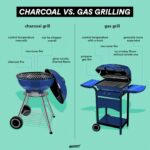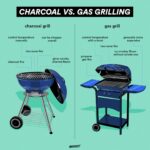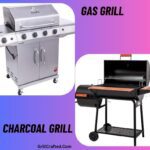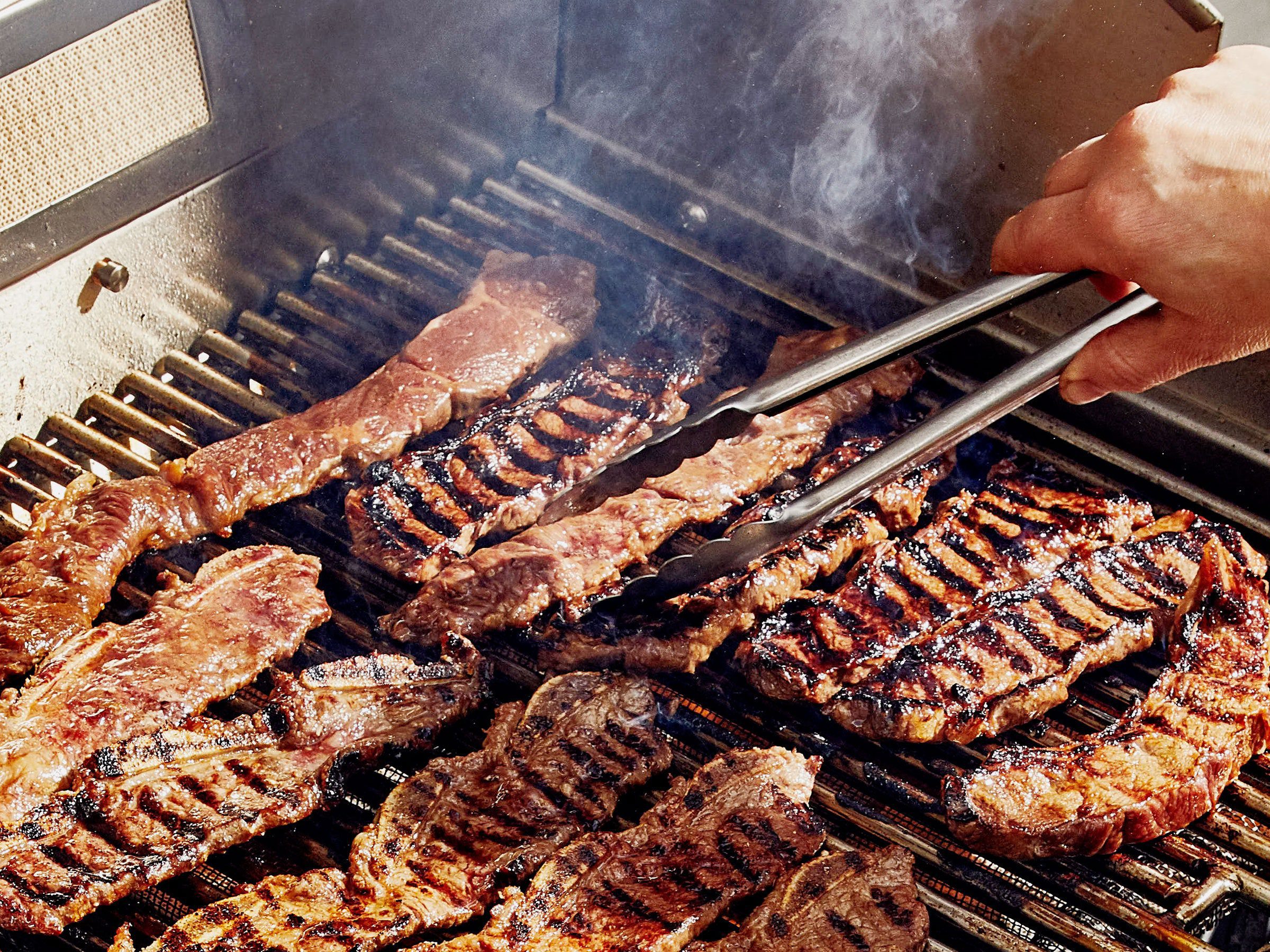
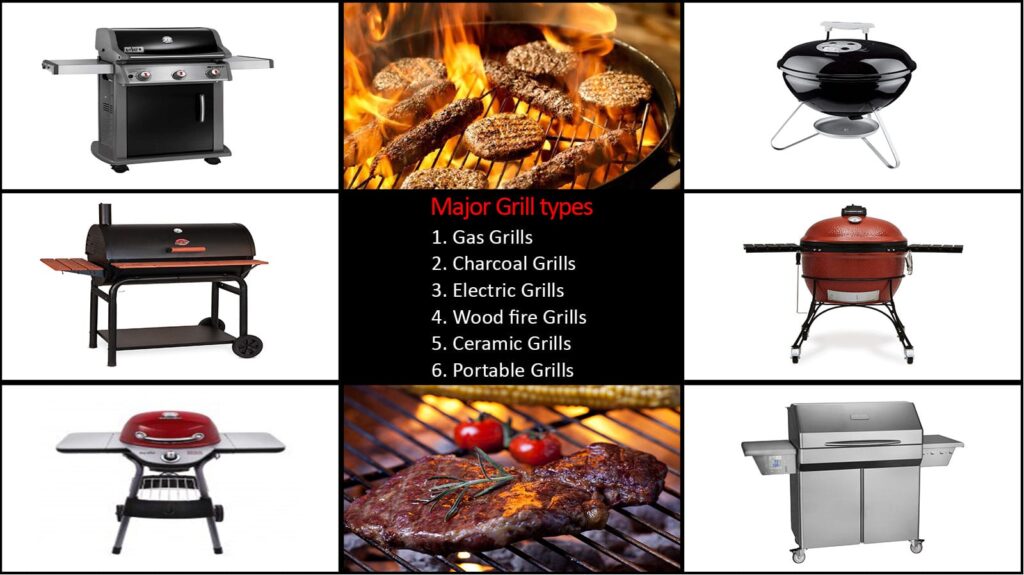
This image is property of cdn.lahinchtavernandgrill.com.
If you’ve been contemplating upgrading your grill or getting a new one altogether, you may have found yourself wondering, “What is the healthiest type of grill?” With so many options available, each claiming to be the best for your health, it can be overwhelming to make a decision.
In this article, we will explore the different types of grills and their impact on your health, providing you with the information you need to make an informed choice that aligns with your wellbeing goals. So, let’s dive in and uncover the healthiest type of grill for your outdoor cooking adventures!
Charcoal Grills:

How Charcoal Grills Work
Charcoal grills are a classic choice for outdoor cooking enthusiasts. When you fire up a charcoal grill, you’re harnessing the power of burning charcoal briquettes or lump charcoal to generate heat. The charcoal is placed in the bottom of the grill, and once ignited, it creates hot coals that radiate heat upwards.
The grate, typically made of stainless steel or cast iron, is where you place your food for grilling. As the heat rises, it cooks your food to perfection, imparting that signature smoky flavor that is beloved by many grill enthusiasts.
Flavor and Aroma
One of the key reasons people are drawn to charcoal grills is the unparalleled flavor and aroma they impart to grilled food. The combination of burning charcoal and the fat dripping from the food creates smoke, and it is this smoke that gives that distinct smoky flavor to your meats, vegetables, and other grilled delicacies.
The flavor is often described as rich, earthy, and intense, which can significantly enhance your dining experience. Whether grilling a juicy steak or some mouthwatering vegetables, charcoal grills can transform ordinary ingredients into delectable culinary masterpieces.
Health Considerations
Regarding health considerations, using a charcoal grill requires some attention. Burning charcoal can generate smoke and release potentially harmful chemicals known as polycyclic aromatic hydrocarbons (PAHs) and heterocyclic amines (HCAs).
When consumed in large quantities, these substances have been linked to an increased risk of certain types of cancers. However, by following some precautions like marinating food, trimming excess fat, and avoiding excessive charring, you can minimize the formation of harmful compounds and still enjoy the flavor and joy of cooking on a charcoal grill.
Safety Precautions
To ensure your safety while using a charcoal grill, it’s important to take certain precautions. Always set up your grill on a stable surface, away from any flammable materials. Never leave your grill unattended while it’s still lit, and always have a fire extinguisher or a bucket of water nearby in case of emergencies.
Using long-handled grilling tools and wearing heat-resistant gloves can protect you from burns. Additionally, make sure to properly dispose of the charcoal ashes after each use, as they can remain hot for hours and pose a fire hazard if not handled carefully.
Gas Grills:
How Gas Grills Work
Gas grills, as the name suggests, rely on the use of propane or natural gas as a fuel source. These grills are equipped with burners that are connected to a gas supply. When you turn on the gas and ignite the burners, they generate heat that is distributed evenly across the cooking grate.
Gas grills offer convenience, allowing quick heating and precise temperature control. Some high-end gas grills come with multiple burners, allowing you to create different temperature zones for simultaneous grilling and cooking versatility.
Convenience and Temperature Control
One of the major advantages of gas grills is their convenience and ease of use. With just a simple turn of a knob, you can ignite the burners and start grilling within minutes. Gas grills reach higher temperatures faster than charcoal grills, making them ideal for those who want a quick and efficient grilling experience.
The temperature control is also a great feature, as you can easily adjust the heat by adjusting the gas flow. This ensures that your food is cooked to perfection, without any guesswork or constant monitoring required.
Health Considerations
Gas grills are generally considered a healthier option compared to charcoal grills. Since there is no direct exposure to smoke or burning embers, the risk of consuming harmful compounds like PAHs and HCAs is significantly reduced.
Additionally, the absence of smoke means that gas-grilled food is less likely to develop that intense smoky flavor. While some may miss the distinct taste, others appreciate the cleaner, more neutral flavor profile that gas grills offer.
It’s important to note that using propane or natural gas can introduce a small risk of gas leaks. Hence, regular maintenance and careful inspection of the gas connections are necessary for safety.
Safety Precautions
To ensure the safe use of a gas grill, always check the gas connections before lighting the grill. Make sure there are no leaks by applying a soap and water solution to the connections and watching for any bubbles.
Also, keep your gas grill away from combustible materials and ensure proper ventilation. Never use your gas grill indoors or in an enclosed area, such as a garage, as this can lead to carbon monoxide poisoning.
When you’re finished grilling, make sure to turn off the gas and clean the grill to prevent grease buildup, which can become a fire hazard.
Electric Grills:

How do Electric Grills Work?
Electric grills are a popular choice for those who don’t have access to outdoor spaces or prefer a more effortless grilling experience. These grills rely on electricity to generate heat through heating elements.
The food is placed on a cooking surface, such as a grate or a flat plate, and the electric heat cooks it perfectly. Electric grills typically have adjustable temperature controls, allowing you to achieve precise cooking temperatures for different types of food.
Ease of Use and Cleaning
One of the biggest advantages of electric grills is their ease of use. Simply plug the grill into a power outlet, and it’s ready to go. There’s no need to worry about lighting coals or dealing with gas tanks.
Electric grills offer easy temperature control; you can adjust the heat with a simple dial. Additionally, electric grills are easy to clean, as they usually have removable cooking plates or grates that can be placed in the dishwasher or cleaned with warm, soapy water. This makes electric grills a convenient option for those who prefer hassle-free grilling.
Health Considerations
Electric grills are generally considered a healthier option compared to charcoal and gas grills. Since there is no combustion or direct exposure to smoke, the formation of harmful compounds like PAHs and HCAs is minimized.
Additionally, the lack of smoke means the food will not develop a distinct smoky flavor. While this may be a drawback for some, it can be advantageous for those who prefer a cleaner and more neutral taste.
Safety Precautions
When using an electric grill, it’s essential to follow basic safety precautions. Ensure that the electrical cords and connections are in good condition and that the power outlet can handle the grill’s power requirements. Avoid using extension cords, as they can increase the risk of electrical hazards.
Keep the grill away from water sources to prevent electrical shock. Always unplug the grill after use and allow it to cool down before cleaning. Finally, be cautious when handling hot surfaces and always use heat-resistant gloves or utensils to protect yourself from burns.
Wood Pellet Grills:

How do Wood Pellet Grills Work?
Wood pellet grills are outdoor cooking appliances using wood pellets as fuel sources. These grills consist of a hopper that holds the wood pellets, an auger that transports the pellets to the fire pot, and a fan that circulates air for combustion.
When you turn on the grill and set the desired temperature, the auger feeds the wood pellets into the fire pot, igniting them. The fan helps maintain a consistent temperature by controlling the airflow. Wood pellet grills are known for delivering direct and indirect heat, allowing for versatile cooking techniques.
Flavor and Versatility
The use of wood pellets in grilling adds a unique and smoky flavor to the food. Depending on the type of wood pellets used, you can achieve different flavors, ranging from mild and fruity to strong and robust.
For example, hickory wood pellets can produce a rich and smoky flavor, while fruitwood pellets like apple or cherry can add a subtle, sweet undertone to your dishes. Wood pellet grills also offer versatility in cooking styles, allowing you to grill, smoke, bake, roast, and even braise your favorite foods.
Health Considerations
When it comes to health considerations, wood pellet grills offer a relatively safe grilling option. The combustion of wood pellets produces less smoke compared to traditional charcoal grills, resulting in a reduced formation of harmful compounds like PAHs and HCAs.
Additionally, using wood pellets creates a more controlled and consistent heat, which can help minimize the risk of undercooking or overcooking your food. However, it’s important to note that using low-quality or improperly stored wood pellets can increase emissions and potentially impact air quality.
Safety Precautions
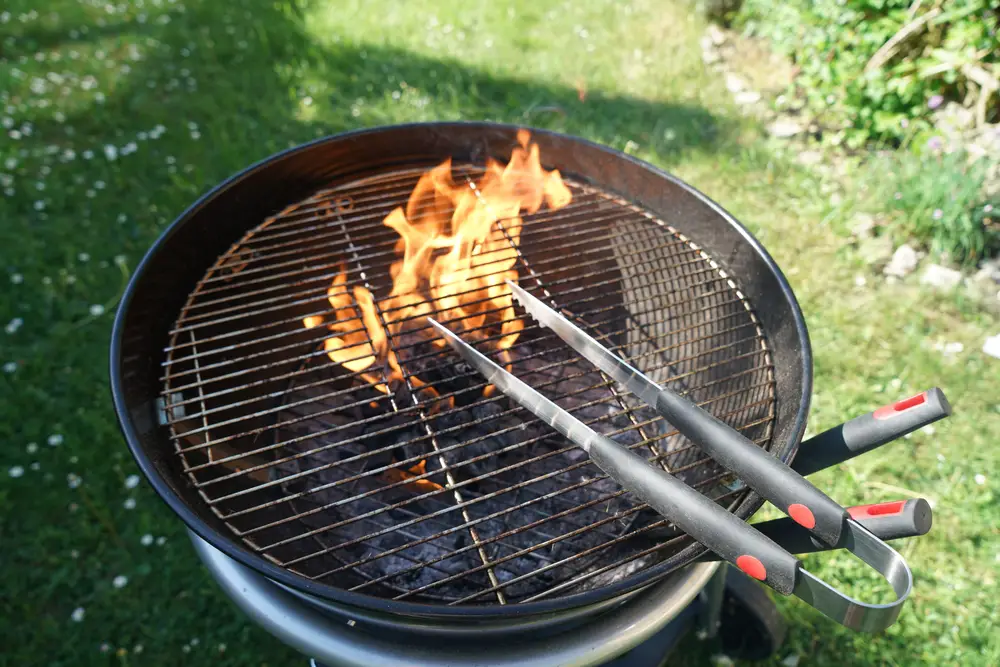
This image is property of www.backyardfoodfix.com.
To ensure the safe use of a wood pellet grill, it’s important to follow a few safety precautions. Make sure to regularly inspect and clean the grill to prevent any accumulation of ash or debris. Avoid using excessive force when adding wood pellets to the hopper to prevent damage to the auger system.
Continuously operate the grill in a well-ventilated area to prevent the buildup of carbon monoxide. If using an indoor pellet grill, please make sure that it is properly installed and vented to prevent the release of smoke and harmful gases into your home. Lastly, never leave the grill unattended while still lit, and keep children and pets away from the cooking area.
Infrared Grills:

How do Infrared Grills Work?
Infrared grills are unique grills that use infrared radiation to cook food. These grills have ceramic or metal plates known as infrared burners, which generate intense heat.
When the burners are ignited, they emit infrared radiation that directly heats the food, rather than relying on convective heat traditionally grill infrared heat is known for providing consistent and even heat distribution, resulting in precise and efficient cooking.
Efficiency and Heat Distribution
One of the key advantages of infrared grills is their efficiency in converting heat into infrared radiation. This means that infrared grills can reach high temperatures quickly, allowing for fast and efficient cooking.
The intense heat generated by the infrared burners also produces excellent heat distribution, ensuring that your food is cooked evenly. This eliminates the need for constant flipping or rearranging of food and helps retain moisture, resulting in tender and juicy grilled dishes.
Health Considerations
When it comes to health considerations, infrared grills offer a safer grilling option compared to charcoal grills. The intense heat generated by the infrared burners helps minimize the formation of harmful compounds like PAHs and HCAs.
Additionally, since infrared grills rely on direct heat transfer to cook the food, there is no smoke or burning embers exposure. This means your food is less likely to develop a robust smoky flavor. However, it’s important to note that infrared grills can reach incredibly high temperatures, so monitoring your food closely is essential to avoid overcooking or charring.
Safety Precautions
When using an infrared grill, it’s important to take certain safety precautions. Ensure that the grill is set up on a stable and level surface to prevent accidents. Always use heat-resistant gloves or utensils when handling hot surfaces or grates.
You can keep a safe distance from the infrared burners to avoid burns or injuries. If your infrared grill has a propane tank, check for leaks by applying soap and water to the gas connections. Lastly, please clean the grill regularly to prevent grease buildup, which can be a fire hazard.
Ceramic Grills:

How do Ceramic Grills Work?
Ceramic grills, also known as kamado grills, have a unique design that sets them apart from other grill types. These grills are made from thick ceramic walls, which are excellent at retaining heat.
The shape of the grill resembles an egg or a dome, and the lid is equipped with vents to control airflow. The charcoal or wood is placed at the bottom of the grill, and as it burns, the ceramic walls trap and radiate heat, creating a convection-like environment that cooks food evenly.
Heat Retention and Evenness
One of the main advantages of ceramic grills is their exceptional heat retention capabilities. The thick ceramic walls are excellent at absorbing and distributing heat, allowing even cooking throughout the grill.
This means that your food will be cooked consistently, with no hot spots or areas of the grill that are cooler than others. Maintaining a stable cooking temperature for long periods is helpful when cooking low and slow recipes like barbecued ribs or smoked brisket.
Health Considerations
Ceramic grills are generally considered a healthier grilling option due to their ability to cook food evenly and efficiently. The even heat distribution prevents excessive charring or undercooking, which can minimize the formation of harmful compounds like PAHs and HCAs.
Additionally, using ceramic walls helps retain moisture in the food, keeping it tender and juicy. However, it’s still important to use proper grilling techniques, such as marinating food, trimming excess fat, and avoiding excessive charring, to mitigate potential health risks.
Safety Precautions
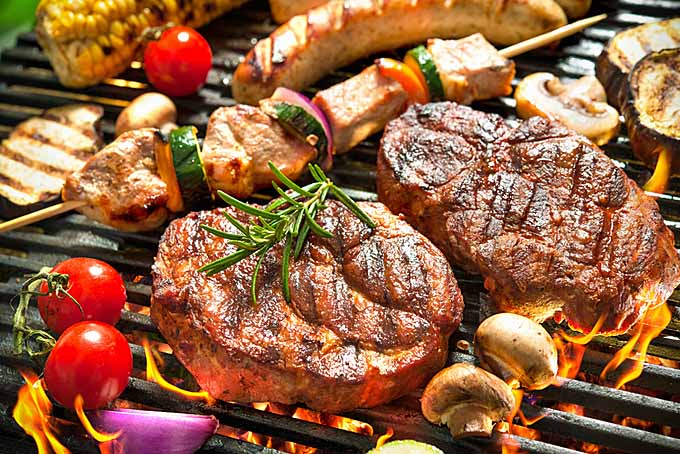
This image is property of foodal.com.
To ensure the safe use of a ceramic grill, it’s important to follow a few safety precautions. Always set up your grill on a stable and heat-resistant surface to prevent accidents. Be cautious when handling the ceramic lid and grates, as they can become extremely hot during use.
Use heat-resistant gloves or utensils to protect yourself from burns. When lighting the charcoal or wood, ensure that the grill is properly ventilated and that there are no flammable materials nearby. Lastly, clean the grill regularly to remove any grease or residue, which can pose a fire hazard.
Contact Grills:

How Do Contact Grills Work?
Contact grills, also known as panini presses or indoor grills, are versatile cooking appliances that allow for both grilling and sandwich-making. These grills consist of two heated cooking plates that come together to cook the food from both sides.
The food is placed between the plates, and the heat from both sides ensures even cooking and beautiful grill marks. Contact grills typically have adjustable temperature controls, allowing you to achieve the desired level of browning or doneness.
Versatility and Cooking Options
One of the main advantages of contact grills is their versatility in cooking options. Beyond standard grilling, you can use a contact grill to make delicious paninis, quesadillas, and even grill marks on vegetables and fruits.
The dual heated plates ensure even cooking and browning, resulting in perfectly melted cheese and crispy sandwiches. Contact grills are also a great option for those who want to enjoy grilled foods all year round, as they can be used indoors with minimal smoke and fuss.
Health Considerations
Contact grills offer a healthier cooking option compared to traditional outdoor grills. The double-sided cooking plates provide even heat distribution, preventing excessive charring or undercooking. The excess fat from the food is also drained away, reducing its calorie content.
Additionally, using a contact grill indoors means that there is less exposure to potentially harmful compounds like PAHs and HCAs, which are more commonly associated with outdoor grilling. However, it’s important to use lean cuts of meat and incorporate plenty of vegetables for a well-balanced and nutritious meal.
Safety Precautions
While contact grills are generally safe to use, it’s important to follow basic safety precautions. Always place the grill on a stable and heat-resistant surface, away from any flammable materials. Keep the grill out of reach of children and pets, as the cooking plates can become extremely hot during use.
Use heat-resistant gloves or utensils when handling the grill to prevent burns. Never leave the grill unattended while it’s still hot, and ensure that it is turned off and unplugged after use. Regularly clean the grill to prevent grease buildup, which can pose a fire hazard.
Indoor Grills:
How Indoor Grills Work
Indoor grills are designed for indoor use, allowing you to enjoy all the benefits of grilling without needing an outdoor space. These grills come in various types, including electric, contact, and infrared grills, each offering unique features.
Indoor grills typically have adjustable temperature controls, allowing you to achieve the desired heat level for grilling. The cooking surface is designed to drain excess fat away from the food, resulting in healthier, lower-calorie dishes.
Convenience and Limited Smoke
One of the main advantages of indoor grills is their convenience and ease of use. They eliminate the need for outdoor setup and are ready to use with just a simple plug-in. Indoor grills are a great option for those who live in apartments or have limited outdoor space.
Another benefit of indoor grills is the limited amount of smoke they produce compared to outdoor grills. This makes them suitable for indoor cooking without triggering smoke alarms or creating an overpowering smoky environment.
Health Considerations
Indoor grills offer a healthier grilling option compared to other types of grills. The controlled temperatures and cooking surfaces help prevent overcooking or excessive charring, reducing the formation of harmful compounds like PAHs and HCAs.
Additionally, the design of indoor grills typically includes features to drain excess fat away from the food, leading to lower fat and calorie content. However, it’s important to choose lean cuts of meat and incorporate plenty of vegetables for a well-balanced and nutritious meal.
Safety Precautions

This image is property of cdn-badpc.nitrocdn.com.
While indoor grills are generally safe to use, it’s important to follow safety precautions to prevent accidents. Always place the grill on a stable and heat-resistant surface to prevent any mishaps. Ensure that the grill is used in a well-ventilated area to minimize the accumulation of smoke or doors.
Keep the grill away from flammable materials, and never leave it unattended while it’s hot. Use heat-resistant gloves or utensils when handling the grill, as the cooking surfaces can become extremely hot. Lastly, clean the grill regularly to prevent grease buildup, which can pose a fire hazard.
Hybrid Grills:
How Do Hybrid Grills Work?
Hybrid grills offer the best of both worlds by combining multiple fuel types, such as charcoal, gas, and wood pellets, into one versatile cooking appliance. These grills typically feature separate cooking chambers or compartments, each with its fuel source and heat control.
This lets you choose the fuel type according to your preference or specific cooking requirements. Hybrid grills offer the flexibility and convenience of gas grills, the smoky flavor of charcoal grills, and the versatility of wood pellet grills, making them an attractive option for enthusiasts.
Combination of Charcoal, Gas, and Other Fuel Types:
The main advantage of hybrid grills is the ability to use different fuel types to achieve the desired grilling experience. The charcoal compartment provides that classic smoky flavor that many grill enthusiasts adore, while the gas or electric components offer quick heating and precise temperature control.
Adding wood peller components allow for even more versatility and flavor options. Whether you’re in the mood for a slow-cooked brisket, a seared steak, or a delicate grilled fish, a hybrid grill can accommodate all your grilling desires.
Health Considerations
The health considerations with hybrid grills vary depending on the fuel type being used. Charcoal grilling can introduce the risk of harmful compounds like PAHs and HCAs due to the smoke and intense heat generated.
However, you can minimize the risks by following proper grilling techniques, such as marinating meat before grilling, trimming excess fat, and avoiding excessive charring. Gas and electric components offer cleaner and more controlled cooking options, reducing the formation of harmful compounds.
It’s important to choose high-quality fuel sources, like natural lump charcoal or food-grade wood pellets, further to enhance the safety and flavor of your grilled dishes.
Safety Precautions
When using a hybrid grill, it’s important to follow safety precautions specific to each fuel type. For charcoal grilling, ensure that the grill is set up on a stable surface and away from any flammable materials.
Use long-handled grilling tools and heat-resistant gloves to protect yourself from burns. For gas components, regularly check for gas leaks and ensure proper ventilation if using wood pellet components; properly clean and maintain the grill to prevent any ash buildup.
Always follow the manufacturer’s instructions and guidelines for the safe operation of your specific hybrid grill model.
Comparing Health Factors:
Fat and Calorie Retention
The type of grill you choose can impact the retention of fat and calories in your food. Charcoal grills tend to allow more fat to drip off the food, resulting in lower calorie content. Gas grills and electric grills also drain excess fat, though they may not achieve the same level of fat removal as charcoal grills.
Infrared grills, contact grills, and indoor grills typically have cooking surfaces designed to drain away excess fat, minimizing the calorie content of your grilled dishes. Wood pellet and ceramic grills also offer good fat drainage, leading to healthier and leaner meals.
Formation of Harmful Substances
When it comes to the formation of harmful substances like PAHs and HCAs, charcoal grills pose the highest risk due to the combustion of charcoal and the resulting smoke. However, by using proper grilling techniques and minimizing charring, you can mitigate these risks.
Gas grills, electric grills, infrared grills, contact grills, indoor grills, wood pellet grills, and ceramic grills generally have lower risks of harmful substance formation due to reduced smoke exposure. It’s important to remember that individual grilling practices and the quality of fuel sourcescan also influence these substances’ formations.
Influences on Nutritional Value
Grilling can impact the nutritional value of your food, but the extent varies depending on the type of grill. Charcoal grills tend to retain more vitamins and minerals compared to other grilling methods, as they cook food at lower temperatures without excessive charring.
Gas grills, electric grills, infrared grills, contact grills, indoor grills, wood pellet grills, and ceramic grills also maintain a good portion of the food’s nutritional value, provided the cooking time is controlled and excessive charring is avoided. Proper grilling techniques, like marinating and using lean cuts of meat, can help preserve the nutritional content of your grilled dishes.
Impact on Food Safety
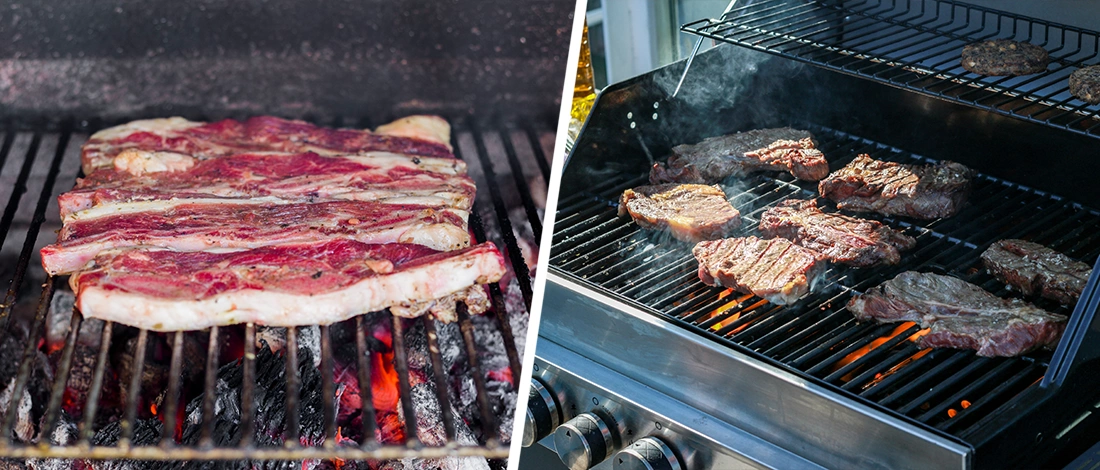
This image is property of carnivorestyle.com.
Food safety is an essential consideration when grilling. It’s important to ensure that your grilled food reaches the recommended internal temperatures to kill any potential harmful bacteria. All types of grills, when used properly, can achieve the necessary cooking temperatures for food safety.
However, it’s crucial to monitor the internal temperature of the food using a meat thermometer to ensure thorough cooking. Cleanliness and hygiene also play a vital role in food safety. Regularly clean and maintain your grill, handle food properly, and avoid cross-contamination to minimize the risk of food borne illnesses.
In conclusion, choosing the healthiest type of grill depends on various factors, including your personal preferences, cooking needs, and understanding of the risks associated with each grill type. While charcoal grills offer that distinct smoky flavor, they come with increased risks of harmful substance formation. Gas grills and electric grills provide convenience and precise temperature control, with reduced exposure to harmful compounds.
Infrared grills and contact grills offer efficient and even cooking, while indoor grills allow for year-round grilling without the need for outdoor space. Wood pellet grills provide unique flavors and versatility, while ceramic grills excel in heat retention and evenness. Hybrid grills combine different fuel types for a customizable grilling experience.
When considering health factors, be mindful of fat and calorie retention, harmful substance formation, nutritional value, and food safety. Whichever type of grill you choose, always prioritize safe grilling practices, proper food handling, and moderation to enjoy delicious and healthy grilled meals.

